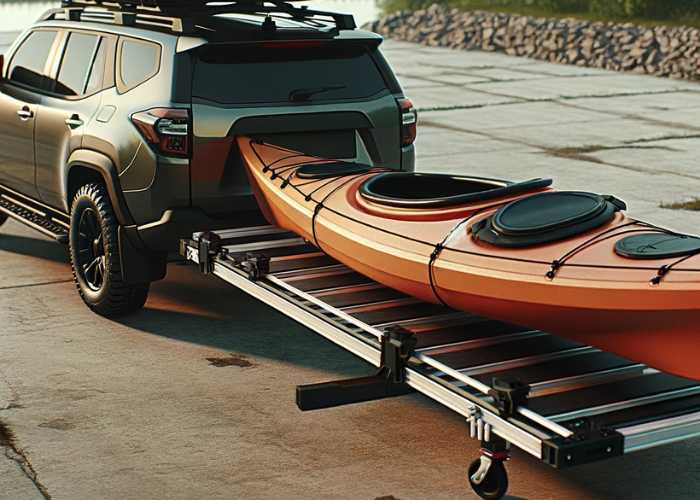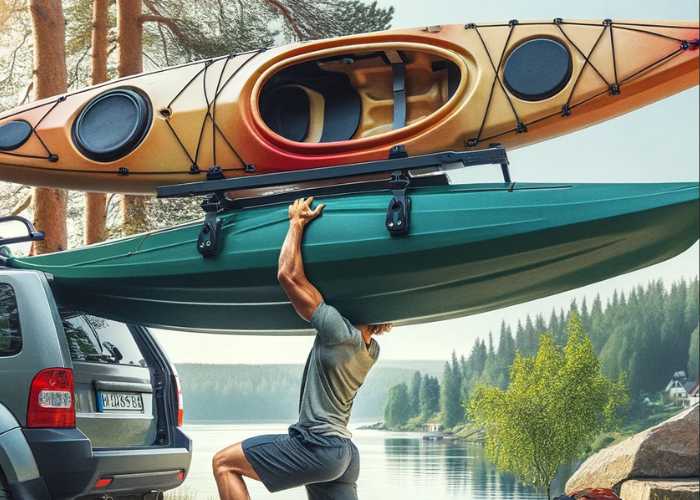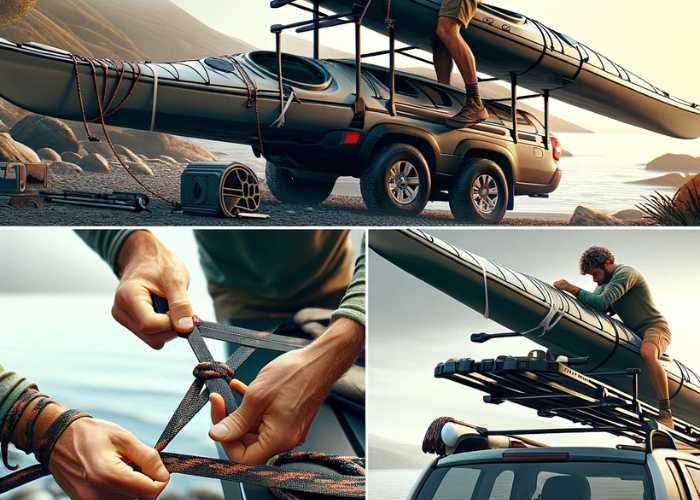Whether you're preparing for a serene lake paddle or an adventurous river excursion, it's crucial to know how to safely and efficiently put your kayak on your vehicle's roof rack.
Select a roof rack that suits your vehicle and kayak type. Common options include J-cradles, saddle racks, and stackers. Ensure the rack is properly installed and secured.
Prepare cam straps, bow and stern lines, and protective padding to prevent scratches on your vehicle and kayak.

Position your kayak next to your vehicle, parallel to it, and close to the rear or side, depending on your lifting method and roof rack type.
Place padding on the edge of the roof where you will lift the kayak to avoid any damage to your car.

Stand behind the kayak, bend your knees, and lift the stern, sliding the kayak onto the roof rack.
For a side load, lift the kayak from its center and place it onto the rack in one smooth motion.

Ensure the kayak is centered on the rack. The hull should face down on J-cradles and saddles and up if using a flat rack.
Secure the kayak with cam straps, making sure they are tight enough to hold the kayak in place but not so tight that they deform it.

Attach bow and stern lines for added stability, especially for long drives or highway travel.
Do a final check to ensure the kayak is stable and the straps are properly secured.

Loading a kayak onto a roof rack doesn't have to be difficult. With the right technique and preparation, you can ensure that your kayak is safely secured and ready for your next adventure.
The best type of roof rack depends on your specific needs and vehicle type. J-cradles are great for saving space, saddle racks provide good hull support, and stackers are ideal for carrying multiple kayaks.
It's possible to load a kayak by yourself, especially with the right technique and if your kayak isn't too heavy. However, having a second person can make the process easier and safer, particularly for heavier kayaks.
Basic equipment includes cam straps to secure the kayak and bow and stern lines for additional stability. Protective padding is also recommended to prevent damage to your vehicle and kayak.
After strapping the kayak down, give it a gentle shake to ensure it's stable. The kayak should not move independently of the vehicle. Make sure the straps are tight but not overly tightened.
Use protective padding or a non-slip mat on the roof of your car where the kayak will make contact. This will help prevent scratches and dents.
Yes, it's safe if the kayak is properly secured. Make sure the kayak is tightly strapped to the rack and the bow and stern lines are attached. It's a good idea to check the kayak’s security periodically during your trip, especially when driving at higher speeds.
Avoid over-tightening the straps, as this can deform the hull of the kayak. The straps should be snug but not so tight that they change the shape of the kayak.